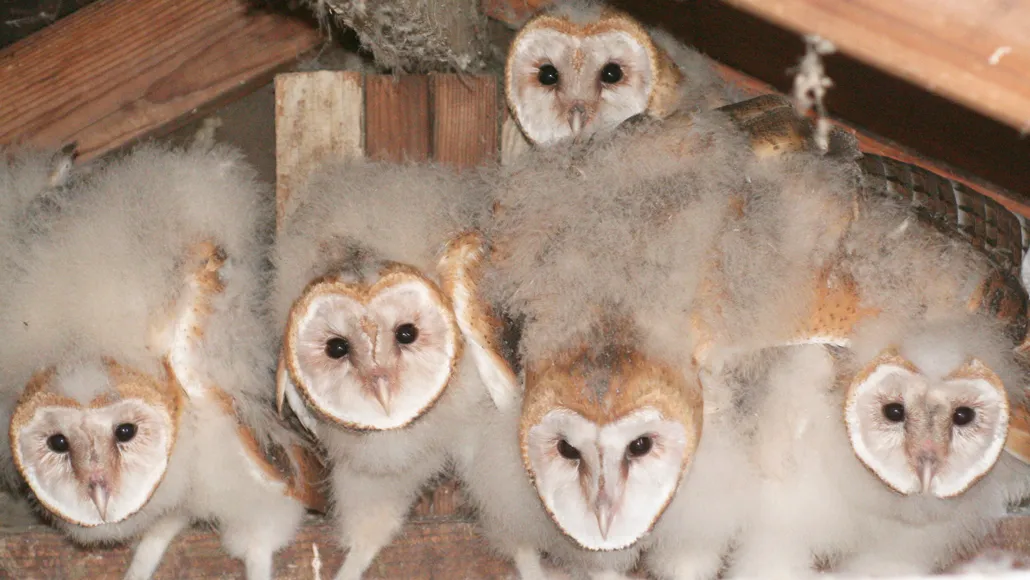
In a barn owl nest, older siblings sometimes donate their meal to a younger, needier sibling, but only if the younger chick grooms the elder first, a study finds.
Chdwckvnstrsslhm/Flickr (CC BY-2.0)
If ever there were a competition to rank sibling relationships in the animal kingdom, barn owls would be close to the top. That’s because elder barn owlets will sometimes give away their meal to their younger siblings. Such cooperative behavior has been reported in adult nonhuman primates and birds, but rarely among young (SN: 2/6/12).
“I don’t know any other species where you can find it,” says Pauline Ducouret, an evolutionary biologist at the University of Lausanne in Switzerland. But scientists weren’t sure what prompted the food sharing. Now, observations of nests show that elder barn owlets offer their food to their younger siblings in exchange for grooming, Ducouret and her colleagues report in the July issue of the American Naturalist.
Barn owls (Tyto alba) raise six chicks at once, on average, and sometimes as many as nine (SN: 9/19/17). But not all chicks hatch at the same time, which means that elder chicks are usually healthier and larger than their younger brothers and sisters.
That’s because all chicks are entirely dependent on the parents for food, and food, in this case, is usually a small rodent, like a vole or a shrew, that can’t be easily split. So at any given visit, mom or dad can feed only one chick at a time. In many bird species, the eldest siblings would simply outcompete the rest, but not barn owls.
To understand the seeming generosity of the elder birds, Ducouret and her team observed 27 broods of barn owls across the Switzerland countryside. The scientists videotaped each brood for two consecutive days and nights to understand how the owlets interacted and attached a tiny microphone backpack to each chick to help identify individual calls.
The team found that older chicks preferentially shared food with the younger siblings that extensively groomed them. And younger owlets, in general, groomed elder siblings more often than the older ones groomed the youngsters, “perhaps to maximize the probability of being fed in return,” the researchers write. In some cases, an elder chick would also offer food to the neediest sibling, which called out incessantly, irrespective of whether it groomed or not.
But food sharing occurred only when the researchers provided extra food to the owlets. So it wasn’t a case of the older chicks risking their survival to feed the youngsters. But when there was enough food to go around, the elder siblings chose to share instead of hoard.
“[It’s an] interesting study with a large sample size and technically nice observation techniques,” says Ronald Noë, a retired behavioral ecologist from the Netherlands who was not part of the research. “One usually reads about competition among siblings and even siblicide,” he says.
Ducouret says that this food-sharing behavior could have evolved because the elder siblings enjoy both indirect and direct benefits. Being groomed offers such immediate boons as protection against parasites like lice or fleas. Grooming could also reduce conflict and social stress among the owlets. And, by helping their genetically related younger kin survive, the elder siblings ensure that more of their genes stay in the gene pool, thus indirectly benefitting themselves in the long, evolutionary run.






